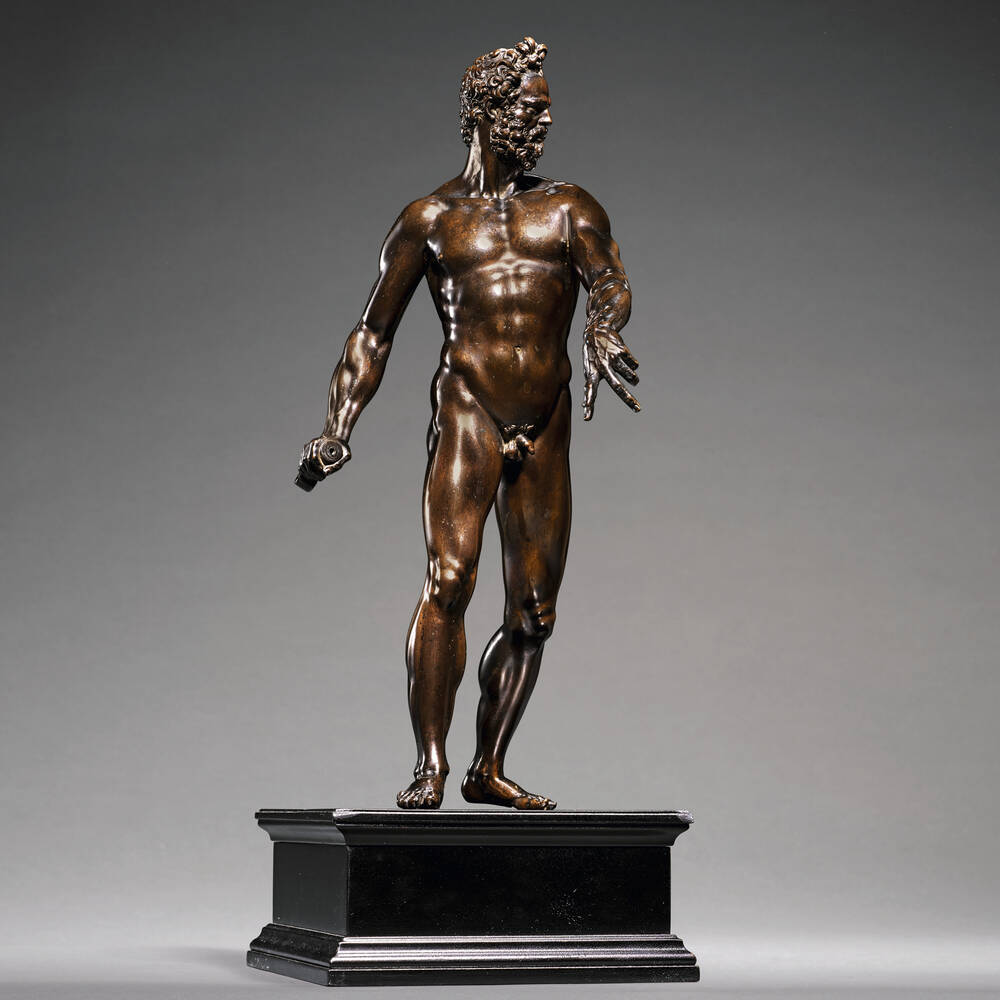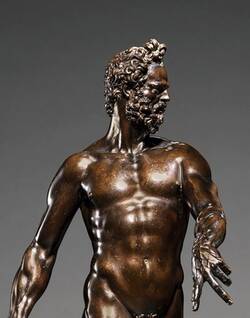This exquisite small bronze came to Dresden as a personal gift from Giambologna to Elector Christian I in 1587. In heroic nudity, armed only with a sword (the right hand holds the hilt of the lost weapon), the god of war commands awe through his all-dominating pose and appears as a symbol of lordly sovereignty. The statuette is the earliest documented casting of the model. It was restituted to the Wettin family in 1924 and was acquired back in 2018.
Further Media







Dresden, 1587. When Christian I, Elector of Saxony, came to the throne, he received some wonderful gifts from Florence. Francesco de’ Medici, Grand Duke of Tuscany, sent to Dresden no less than three small bronze statues by his court artist Giambologna. And Giambologna himself sent a fourth statuette as a personal gift. Even though as an artist Giambologna ranked far below the Elector of Saxony, he was so famous he could presume to send a ruling royal a gift – a figure of Mars, god of war, a symbol of a commanding ruler.
For 337 years, Giambologna’s bronze statuette of Mars was part of the Dresden art collection – until 1924. In post-First World War Germany, the Empire ceased to exist and the ruling dynasties had to abdicate power. In Saxony, under the expropriation agreement, the Mars statuette was returned to the former ruling House of Wettin as private property. Afterwards, the statuette was auctioned on the art market. In 1988, it was acquired by the Bayer corporate collection. In summer 2018, the company made arrangements at Sotheby’s in London to have the statuette auctioned. Its estimated value was between three and five million pounds. The decision met with fierce public protests in Germany. Eventually, just one day before the auction, Bayer withdrew Giambologna’s small bronze of Mars. In a spectacular action, the SKD, the State Art Collection, managed to buy back the statuette for the Sculpture Collection, and Giambologna’s Mars returned home.
The technique of bronze casting is over 2000 years old. The process, which is quite complex, begins with the artist modelling a figure from wax. The wax figure is then coated with clay and allowed to dry. When the mould is heated, the outer layers of clay are baked and the soft wax inside melts leaving the mould to cast the bronze.
However, given the risk of damage when removing an entire mould, a figure is often not cast as one unit, but in individual pieces. In the next stage, enough molten wax is poured into the moulds to form an even wax layer inside. This needs to be as smooth as possible since it later corresponds exactly to the figure’s ‘bronze skin’. The rest of the hollow mould is then filled with a mix of wet clay and sand. When this core has hardened, the individual pieces covered in wax can be removed from their moulds and joined together to form the entire figure. The pieces are joined with core pins and the wax edges smoothed and joined with a hot knife. At this point, the wax intermodel, as it is called, is fully assembled. In the next stage, wax rods are added to the intermodel to provide channels for the bronze during the casting process.
Then the outer mould is built up. To ensure every detail is reproduced, the clay coating over the figure is added layer for layer. After it has been fired, the massive form is inverted so the melted wax can flow out. As the wax rods, known as sprues, melt and form hollow channels, they provide the route to pour in the hot molten bronze into the mould, and at the same time let the air escape. After the metal cools, the sprues are sawn or chiselled off, the holes filled and, in the last step, the surface cleaned, smoothed and polished.
- Location & Dating
- before 1587
- Material & Technique
- Bronze
- Dimenions
- Gesamtmaß: H: 57,1 cm; B: 18,7 cm; T: 22,45 cm; G: 4 kg
- Museum
- Skulpturensammlung
- Inventory number
- Inv. 1765 Bl. 095 Nr. 176